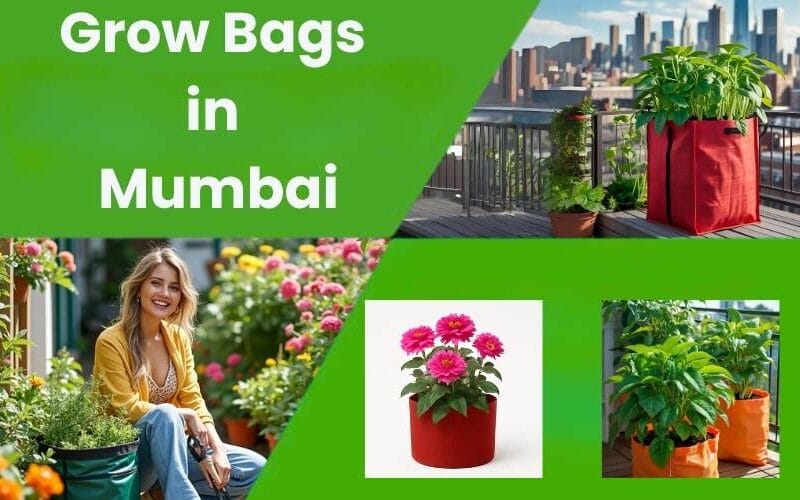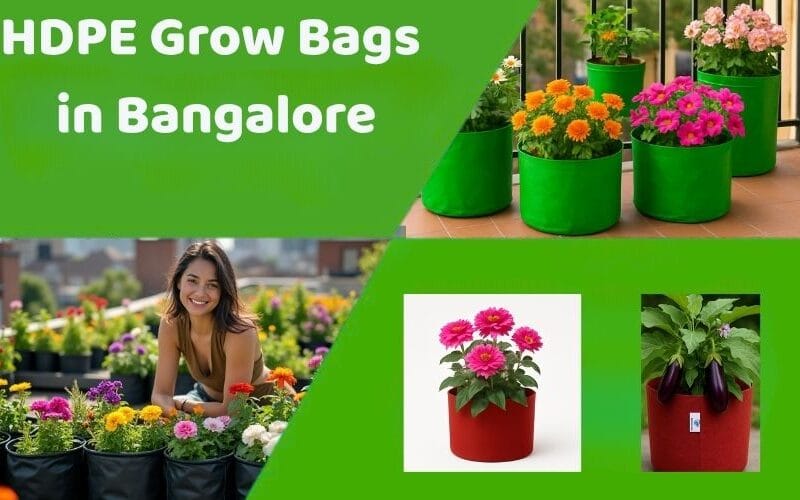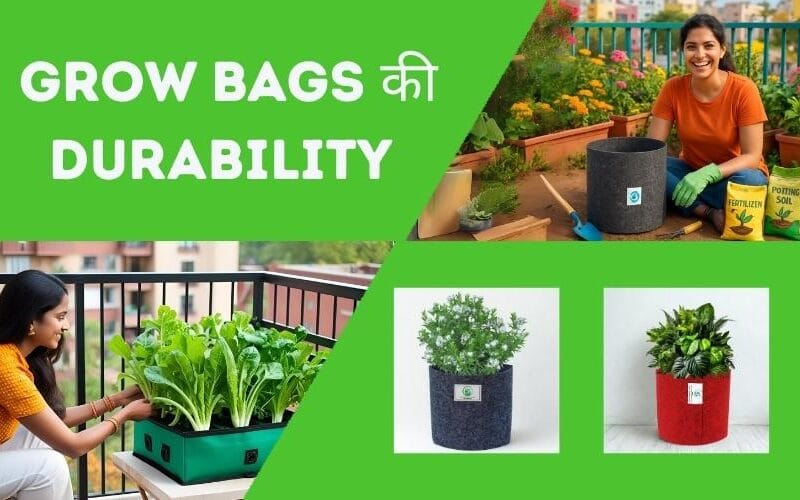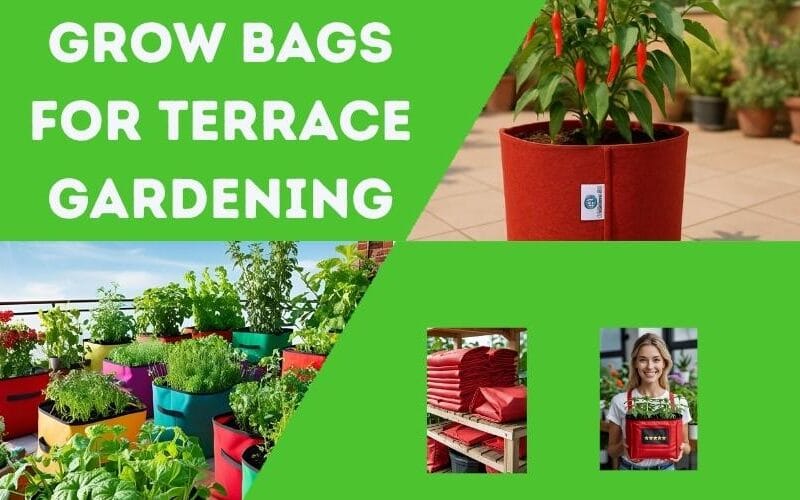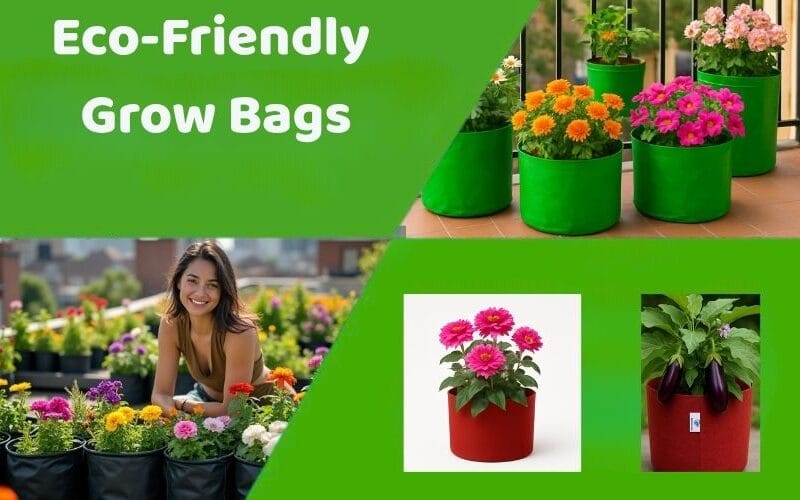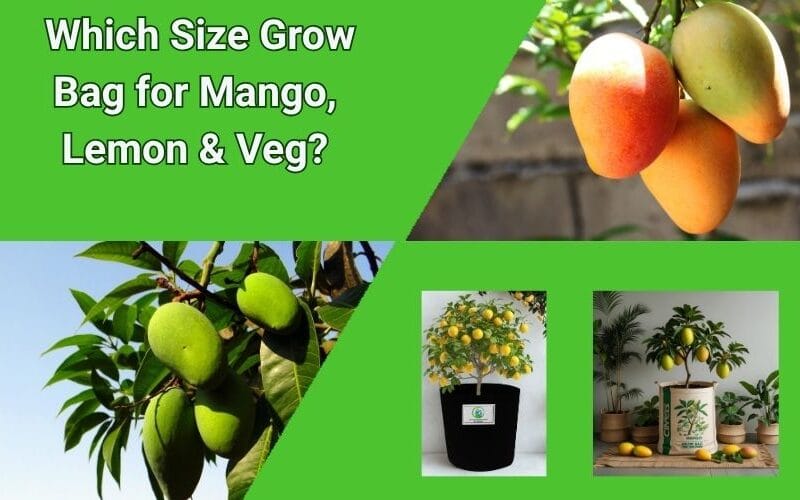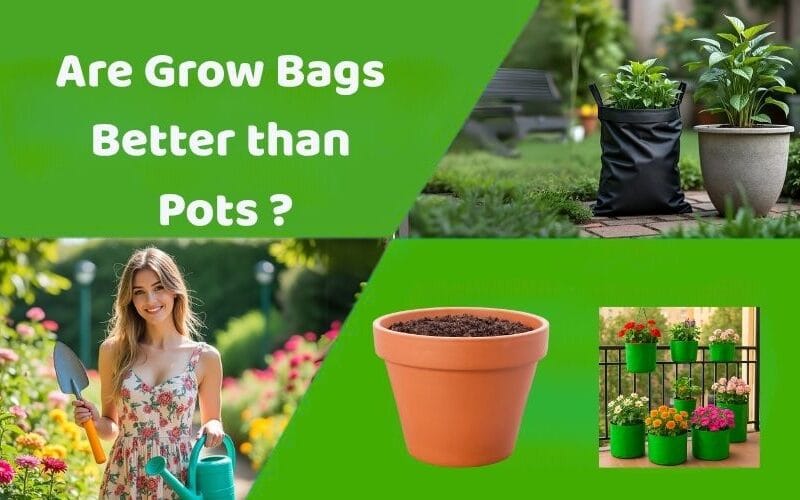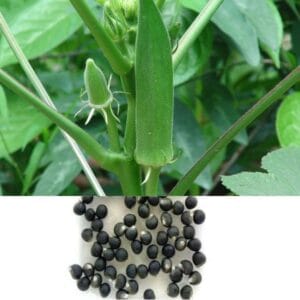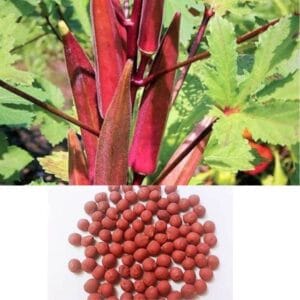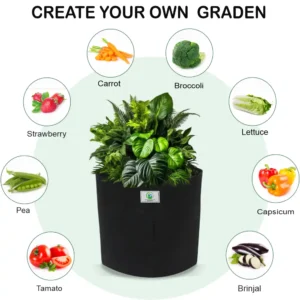7 Amazing Ways to Reuse Old Grow Bags for Multiple Seasons
Are you a keen gardener who finds yourself with a growing pile of used grow bags at the end of each season? Instead of contributing to landfill waste, you can embrace a more sustainable approach and learn how to reuse old grow bags effectively for multiple growing seasons. Not only is this environmentally responsible, but it can also save you money in the long run. This guide will walk you through seven amazing ways to clean, revitalize, and repurpose your trusty grow bags, ensuring they continue to serve your gardening endeavors for years to come.
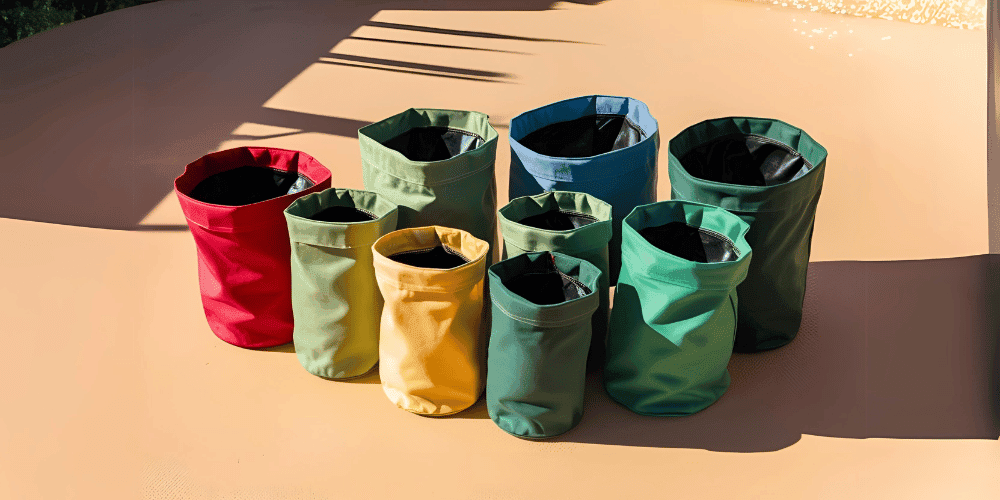
Why Bother Reusing Grow Bags?
Before we dive into the how-to, let’s briefly touch upon the “why.” Choosing to reuse old grow bags offers several compelling benefits for the eco-conscious gardener:
Environmental Sustainability: Reducing waste is crucial for a healthier planet. By reusing, you’re lessening the demand for new plastic production.
Cost Savings: Grow bags, while relatively affordable, can add up over time, especially for larger gardening setups. Reusing them minimizes this expense.
Resourcefulness: Embracing resourcefulness is a core tenet of gardening. Giving old items new life is a satisfying and practical approach.
Reduced Footprint: Every small step towards sustainability contributes to a smaller environmental footprint.
Preparing Your Old Grow Bags for Reuse
The first crucial step in learning how to reuse old grow bags is proper preparation. Simply refilling them with fresh soil might lead to problems down the line. Here’s a detailed guide to cleaning and revitalizing your used bags:
1. Emptying and Initial Cleaning:
Begin by carefully emptying the old grow bags. Dispose of the spent soil responsibly – you can often add it to your compost pile or use it as a soil amendment in other areas of your garden. Once empty, give the inside of the bags a good shake to remove any loose debris, roots, or dried-up plant matter.
2. Removing Stubborn Roots and Debris:
For more stubborn roots clinging to the fabric, you might need to gently scrub the inside of the bag with a stiff brush. A small hand tool or even gloved hands can help dislodge tangled roots. Be careful not to damage the integrity of the grow bag material during this process.
3. Washing the Grow Bags:
This is a critical step in preparing to reuse old grow bags as it helps remove potential pathogens, pests, and built-up salts. You have a few options for washing:
Hose Down: For lightly used bags, a thorough rinse with a garden hose, both inside and out, might suffice. Ensure all visible dirt and debris are washed away.
Soaking: For more heavily used bags, fill a large tub or container with lukewarm water and add a mild, eco-friendly detergent or a solution of white vinegar (about 1 cup per gallon of water) or hydrogen peroxide (about 1/4 cup per gallon of water). Submerge the grow bags and let them soak for several hours or even overnight. This will help loosen dirt and kill potential harmful organisms.
Gentle Scrubbing: After soaking, use a soft brush or sponge to gently scrub the inside and outside of the bags, paying attention to any stained or heavily soiled areas.
Machine Washing (Use with Caution): Some durable fabric grow bags may be machine washable on a gentle cycle with mild detergent. However, always check the manufacturer’s recommendations if available. Mesh grow bags are generally not suitable for machine washing as they can snag or tear. If you choose this method, use a mesh laundry bag to protect the grow bag and your washing machine.
4. Disinfecting (Optional but Recommended):
To further ensure the health of your future plants, consider disinfecting your grow bags after washing. Here are a few options:
Vinegar Solution: A diluted white vinegar solution (1 part vinegar to 4 parts water) can act as a mild disinfectant. Spray the inside of the bags thoroughly and let them air dry.
Hydrogen Peroxide Solution: A 3% hydrogen peroxide solution can also be sprayed inside the bags. It will fizz and then break down into water and oxygen, making it an environmentally friendly option.
Sunlight: The natural UV rays of the sun are a powerful disinfectant. After washing, lay the grow bags flat in a sunny spot and allow them to dry completely for several days.
5. Thorough Drying:
Completely drying your grow bags after washing and disinfecting is essential to prevent mold and mildew growth. Hang them on a clothesline or lay them flat in a well-ventilated area until they are fully dry to the touch.
👇 Explore more gardening tips in this post
7 Amazing Ways to Reuse Your Cleaned Grow Bags
Once your old grow bags are clean and dry, the possibilities for their reuse are plentiful. Here are seven amazing ideas to get you started:
1. Growing the Same Type of Plant (with Soil Amendment):
If you plan to grow the same type of plant in the reused grow bag, it’s crucial to replenish the soil. While the bag itself can be reused, the previous soil will likely be depleted of nutrients. Empty the old soil (as mentioned earlier), clean the bag thoroughly, and then refill it with a high-quality, fresh potting mix amended with compost or other organic fertilizers to provide the necessary nutrients for healthy growth. This is a straightforward way to reuse old grow bags efficiently.
2. Growing Different Types of Plants:
Reusing grow bags for different plant varieties is a great way to maximize their lifespan. After cleaning and potentially disinfecting the bags, simply refill them with the appropriate soil mix for the new plants you intend to grow. Consider rotating plant families to help prevent the buildup of soil-borne diseases specific to certain plant types.
3. Creating Makeshift Raised Beds or Planters:
Larger, sturdier grow bags that might have minor tears or are no longer ideal for individual plants can be repurposed to create small, contained raised beds or planters. You can place them directly on the ground or on a patio. Fill them with a suitable soil mix and plant multiple smaller plants or a cluster of herbs or flowers. This offers a practical solution to reuse old grow bags that are nearing the end of their individual use.
4. Using as Liners for Decorative Pots:
If you have attractive but non-draining decorative pots, old grow bags can be cut and used as liners. This provides drainage for your plants while keeping the decorative pot clean and dry. Simply cut the grow bag to the appropriate size and shape to fit inside the outer pot, place your plant (in its original nursery pot or with soil directly in the liner), and water as needed. This is a clever way to reuse old grow bags in a more aesthetic manner.
5. Starting Seeds and Seedlings:
Smaller or even cut-up pieces of old grow bags can be used as temporary containers for starting seeds and seedlings. Their breathable fabric is beneficial for young roots. You can either fill small pieces with seed-starting mix or cut larger bags into smaller, pouch-like containers. Once the seedlings are large enough, they can be easily transplanted into larger grow bags or directly into the garden. This is an economical way to reuse old grow bags during the propagation stage.
6. Storing Garden Supplies or Compost Ingredients:
Cleaned and dried grow bags can be surprisingly useful for storing various garden supplies. Larger bags can hold things like empty plant pots, garden gloves, small tools, or even bags of soil amendments. They can also be used to collect and contain materials for your compost pile, such as fallen leaves or grass clippings, before transferring them to your main composting system. This offers a practical and organized way to reuse old grow bags.
7. Weed Barriers or Mulch Layers:
Larger, flattened grow bags or pieces of them can be used as temporary weed barriers in garden beds. Lay them down on the soil surface around your plants and cover them with mulch to hold them in place and make them less visible. While not a long-term solution, this can be helpful for suppressing weeds in specific areas. Similarly, shredded pieces of old grow bags (if the material is suitable and won’t leach harmful chemicals) could potentially be used as a coarse layer of mulch, although this should be approached with caution and research based on the bag’s material. This is an unconventional yet potentially useful way to reuse old grow bags.
Extending the Lifespan of Your Grow Bags
Beyond just reusing them at the end of a season, there are steps you can take during the growing season to prolong the life of your grow bags:
Avoid Overwatering: Excessive moisture can weaken the fabric over time. Ensure your grow bags have adequate drainage.
Handle with Care: Avoid dragging or roughly handling full grow bags, as this can cause tears.
Rotate Plants: As mentioned earlier, rotating plant families can help prevent the buildup of soil-borne diseases that might necessitate discarding a bag prematurely.
Consider Pot-in-Pot Systems: Placing a smaller nursery pot inside the grow bag can reduce direct contact between the soil and the bag material, potentially extending its life.
🌱 7 Smart Ways to Reuse Old Grow Bags
Use for Smaller Plants – Cut large bags and reuse for herbs or flowers.
Make DIY Seedling Bags – Convert worn-out bags into seedling containers.
Compost Holder – Repurpose old bags as temporary compost bins.
Weed Blockers – Lay flat in garden beds to suppress weeds.
Grow Bag Liners – Use inside new bags to extend their life.
Raised Bed Liners – Line wooden raised beds with old bags for water retention.
Vertical Gardening – Hang old bags on walls or fences to grow herbs.
Grow Bag
Conclusion: Embrace Sustainable Gardening by Reusing Grow Bags
Learning how to reuse old grow bags is a simple yet impactful way to embrace sustainable gardening practices. By taking the time to clean, disinfect, and repurpose these versatile containers, you can reduce waste, save money, and contribute to a healthier environment. From growing new plants to organizing garden supplies, the possibilities for giving your old grow bags a second (or even third!) life are truly amazing. So, before you reach for the trash can, consider the many ways you can creatively and effectively reuse old grow bags in your garden.
FAQ
❓ Can grow bags be reused?
Yes, grow bags can be reused for multiple growing seasons if they are properly cleaned and stored. Even old or damaged ones can be repurposed for other gardening uses.
❓ How many times can I reuse grow bags?
With proper care, HDPE and geo fabric grow bags can last 3–7 seasons, while jute grow bags may last 1–2 seasons. Always check for drainage and material wear before reusing.
❓ What can I do with old or torn grow bags?
You can cut and reuse them for:
Seedling starters
Compost holders
Weed blockers
Liners for new grow bags or raised beds
Wall-hanging planters
❓ Is it safe to reuse grow bags for edible plants?
Yes, as long as you clean them properly, remove old soil, and ensure no fungal or pest contamination, it's safe to reuse grow bags for vegetables and herbs.
❓ How do I clean grow bags before reusing?
Shake off old soil, rinse thoroughly, and soak in a mild vinegar or bleach solution (1:10 ratio) to disinfect. Let them dry completely before reusing or storing.



